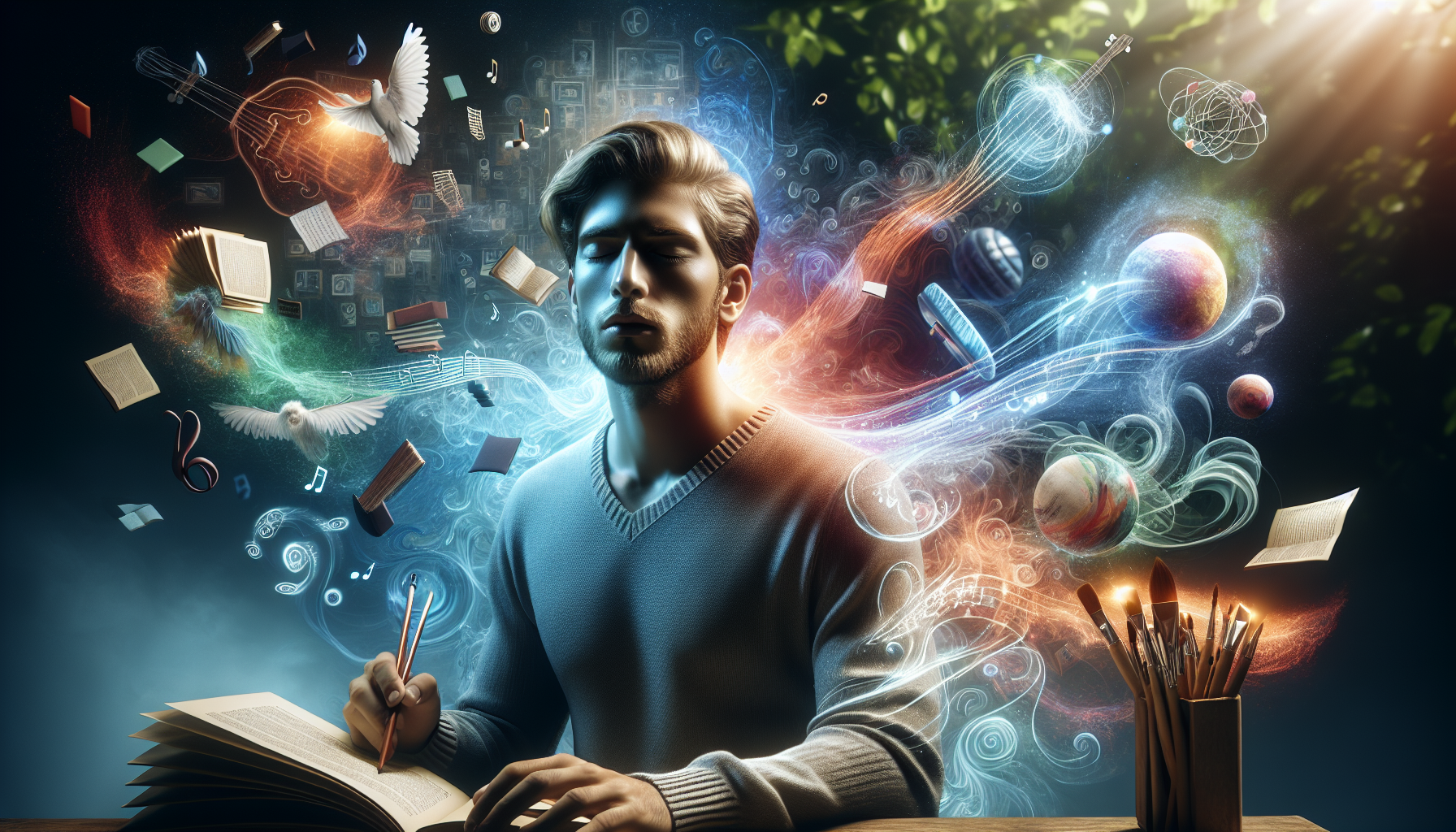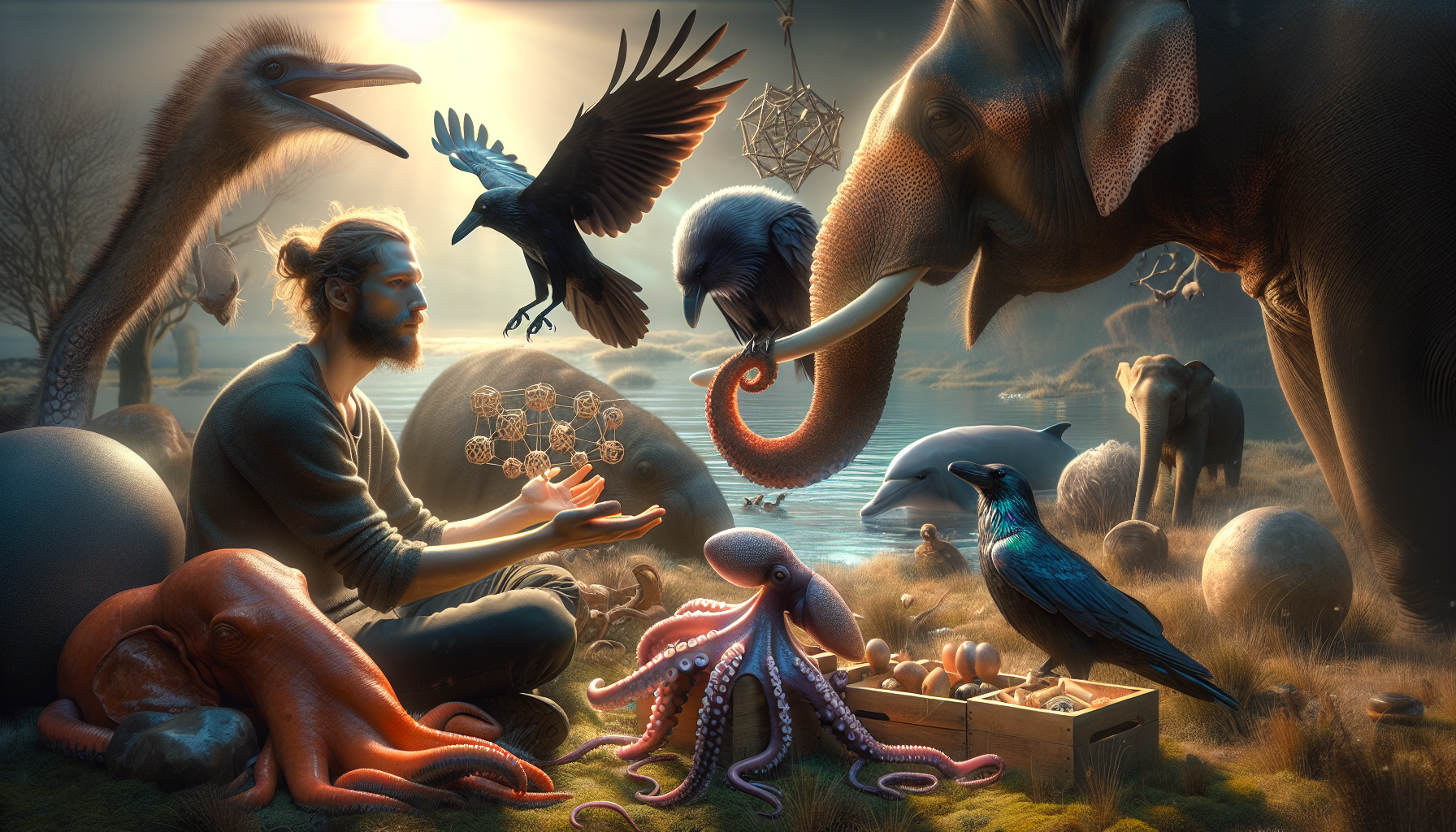In a world that constantly demands innovation, creativity, and rapid learning, many of us find ourselves searching for that elusive edge—something that sets us apart and propels us forward. We seek tools and techniques to unlock the hidden potential within us, hoping to tap into reservoirs of creativity and cognition that lie just beneath the surface of our everyday consciousness. Enter the fascinating realm of altered states of consciousness, where trance becomes a powerful vehicle for transformation. Imagine a world where accessing heightened levels of creativity and accelerated learning is not just a possibility, but a tangible reality. 🌌
Trance states have long been shrouded in mystique and misunderstanding, often relegated to the realms of esoteric practice or theatrical performance. Yet, as science delves deeper into the workings of the human mind, the potential of these states is being recognized and harnessed in ways previously unimagined. When we talk about trance, we are referring to a natural, altered state of consciousness that can be induced through various techniques such as meditation, hypnosis, or rhythmic stimulation. These states can facilitate profound shifts in perception and cognition, offering a gateway to enhanced mental capabilities.
In this article, we will journey through the science behind altered states of consciousness, unraveling the mysteries of the mind and exploring how these states can be intentionally cultivated to boost creativity and learning. We will delve into the neural mechanisms that underpin trance states, examining how they impact brain function and open doors to new ways of thinking. From ancient shamanic practices to modern-day applications in psychology and education, we will explore a rich tapestry of methods used to induce and harness these states. By understanding the science and history, we can better appreciate the immense potential they hold.
As we navigate this intriguing subject, you will discover practical techniques and insights for integrating trance states into your daily life. Whether you are an artist seeking inspiration, a student aiming for academic excellence, or a professional striving for innovative solutions, the power of trance can be your ally. We will provide you with actionable steps to safely and effectively enter these states, tapping into your subconscious to unlock a wealth of ideas and solutions. So, prepare to embark on an enlightening exploration of the mind—a journey that promises not only to enhance your understanding but to empower you with tools to transform your creative and learning experiences. 🚀
Understanding Altered States of Consciousness
Altered states of consciousness (ASCs) have intrigued humans for centuries, serving as the basis for spiritual, therapeutic, and educational practices. From shamanic rituals to modern-day neurotherapy, the potential of these states to unlock the mind’s capabilities is profound. But what exactly are ASCs? At their core, altered states of consciousness are conditions wherein the brain operates differently from its normal waking state. These states can be induced through various means, such as meditation, hypnosis, or trance, leading to enhanced focus, creativity, and learning capabilities.
In the realm of education, utilizing ASCs for learning is gaining traction. Educators and learners are beginning to explore how these states can improve memory retention, comprehension, and cognitive flexibility. For instance, the practice of mindfulness, which fosters a meditative state, has been shown to increase gray matter density in the brain, enhancing learning abilities. Similarly, hypnotherapy has been used to overcome learning blockages and improve concentration.
ASCs also play a significant role in creativity. Many artists, musicians, and writers have tapped into altered states to break through creative blocks and discover new ideas. The trance state, specifically, allows for a deeper connection with one’s subconscious mind, enabling the flow of novel thoughts and inspirations. This synergy between ASCs and creativity has been the subject of numerous studies, illustrating how the brain’s plasticity in these states can lead to groundbreaking artistic and intellectual achievements.
The Science Behind Trance and Learning
Trance states, often associated with rhythmic stimuli like drumming or chanting, are a specific type of altered state that can profoundly impact learning and cognitive function. During a trance, the brain enters a unique mode of operation, often characterized by increased theta wave activity. These theta waves are associated with deep relaxation and heightened suggestibility, creating an optimal environment for learning.
Research has shown that trance states can enhance memory consolidation, allowing information to be processed and stored more effectively. This is particularly beneficial in educational settings where large amounts of information need to be retained. Moreover, the heightened focus achieved in a trance state reduces distractions, enabling learners to absorb and comprehend complex subjects more thoroughly.
The application of trance in learning environments is not just theoretical. Practical implementations, such as trance-based language learning, have yielded promising results. By inducing a trance state, learners can immerse themselves fully in a language, absorbing vocabulary and grammar rules with greater ease. The repetitive and rhythmic nature of trance induction, whether through music or guided meditation, aids in this absorption process, making it a valuable tool for educators and students alike.
Creativity Unleashed: Trance and the Artistic Mind
The connection between trance states and creativity is well-documented across various artistic disciplines. Artists have long used trance to access a deeper level of consciousness, where inspiration flows freely, and traditional cognitive barriers dissolve. This phenomenon is not just limited to professional artists; anyone can tap into this creative potential through trance.
One of the primary ways trance enhances creativity is by facilitating a state of flow, where individuals become fully immersed in their creative activity. This state is characterized by a loss of time awareness, heightened focus, and an effortless expression of ideas. The trance state lowers the brain’s default mode network activity, which is responsible for self-criticism and doubt, allowing for more free-form and innovative thinking.
Furthermore, trance can bridge the gap between the conscious and subconscious mind, enabling access to a reservoir of ideas and experiences stored away from daily consciousness. This deeper connection can lead to unexpected insights and breakthroughs in creative projects. For those seeking to enhance their creativity, experimenting with trance can open doors to new realms of artistic expression and innovation.
Techniques for Inducing Trance States
There are various techniques for inducing trance states, each with its unique benefits and applications. Some popular methods include:
- Meditation: Focusing on breathing or a mantra to enter a relaxed state.
- Guided Imagery: Using visualizations to guide the mind into a trance.
- Rhythmic Drumming: Listening to repetitive beats to alter brainwave patterns.
- Self-Hypnosis: Employing scripts or recordings to guide oneself into a trance.
Each technique has its strengths, and the choice depends on the individual’s preference and desired outcome. For a visual guide on these techniques, watch this YouTube video by Mindful Meditation Channel.
Comparative Analysis of Trance Techniques
Understanding the differences and benefits of various trance techniques can help individuals choose the most effective method for their needs. Below is a comparative analysis of popular trance induction techniques:
| Technique | Benefits | Challenges |
|---|---|---|
| Meditation | Enhances relaxation, improves focus, widely accessible. | Requires practice, initial distractions common. |
| Guided Imagery | Powerful visualizations, reduces stress, boosts creativity. | May require a facilitator or recordings, some find it difficult to visualize. |
| Rhythmic Drumming | Quick induction, effective for group settings, ancient technique. | May not be suitable for all, requires rhythm instruments. |
| Self-Hypnosis | Empowering, can be tailored, accessible through scripts. | Learning curve involved, may require initial guidance. |
Choose the technique that resonates most with you and fits your lifestyle. Each method offers unique paths to unlock the full potential of your mind. Engage with the resources available, experiment with different techniques, and see which one fosters the best results for you. 🧠✨
Practical Applications of Trance in Modern Contexts
The practical applications of trance in today’s world are vast and varied, extending beyond personal growth to influence professional and academic fields. For instance, in corporate settings, trance-based relaxation techniques are employed to enhance employee well-being, boost productivity, and foster innovative thinking. Workshops and seminars often incorporate trance exercises to help participants connect more deeply with their objectives and cultivate a more collaborative environment.
In the field of education, trance methods are being integrated into curricula to aid students in managing stress, improving concentration, and enhancing information retention. Teachers are trained to use trance-inducing techniques like mindfulness and guided meditation to help students focus and absorb material more effectively. This holistic approach not only enhances learning outcomes but also supports students’ emotional and mental health, creating a more balanced educational experience.
Furthermore, in therapy and counseling, trance is used as a tool for accessing deep-seated memories and emotions, facilitating healing and personal transformation. Hypnotherapy, a trance-based technique, has been shown to be effective in treating a range of psychological issues, from anxiety and depression to phobias and trauma. By altering the state of consciousness, therapists can guide clients to confront and resolve inner conflicts, leading to lasting change and growth.
Exploring the Intersection of Technology and Trance
With advancements in technology, new methods of inducing trance states are emerging, blending traditional practices with modern innovations. Virtual reality (VR) and augmented reality (AR) are at the forefront of this intersection, offering immersive experiences that can easily guide users into a trance. These technologies simulate environments that are conducive to relaxation and focus, making them powerful tools for both personal development and educational purposes.
Additionally, biofeedback devices are becoming increasingly popular for monitoring physiological responses during trance induction. These devices provide real-time feedback on brainwaves, heart rate, and other bodily functions, allowing users to fine-tune their trance experiences for optimal results. This integration of technology and trance represents a significant advancement in harnessing altered states of consciousness for human development.
The ongoing exploration of these modern applications underscores the timeless relevance of trance states and their potential to transform the way we learn, create, and live. As research and technology continue to evolve, the possibilities for leveraging trance to enhance human potential are limitless. 🚀
For a more detailed exploration of the interplay between technology and trance, see this engaging discussion in a YouTube video by TechInnovate.

Conclusion
In concluding our exploration of the transformative potential of trance and altered states of consciousness for enhancing learning and creativity, we have traversed a fascinating landscape of psychological, neurological, and practical insights. The journey through this intricate subject has illuminated how altered states can serve as powerful tools, not only in expanding the mind’s capabilities but also in fostering innovation and deeper understanding.
Throughout this article, we delved into the historical context of trance states, discovering that such states have been harnessed by various cultures and traditions across centuries for spiritual and practical purposes. We explored the scientific underpinnings of how altered states affect brain function, emphasizing the role of brainwave patterns, neurotransmitters, and the default mode network in facilitating enhanced cognitive processes. By understanding these mechanisms, we gain insights into how to deliberately enter and benefit from these states, thereby unlocking new dimensions of learning and creativity.
A significant portion of our discussion centered on practical applications and techniques to access altered states, such as meditation, hypnosis, and rhythmic breathing. These methods provide accessible pathways for individuals to tap into the subconscious mind, allowing for improved memory retention, problem-solving, and creative thinking. We highlighted the importance of creating a conducive environment, setting clear intentions, and practicing regularly to maximize the benefits of these states.
Moreover, we considered the ethical and safe use of substances like psychedelics, which can also induce altered states. While acknowledging their potential, we emphasized the importance of controlled and guided use under professional supervision to mitigate risks and ensure positive outcomes.
The benefits of harnessing trance and altered states extend beyond individual growth. In educational settings, incorporating techniques that induce these states can revolutionize how information is absorbed and processed, leading to more effective teaching methodologies. In the realm of creativity, artists, writers, and innovators can use these states to break through mental barriers and access novel ideas and perspectives that might otherwise remain untapped.
As we conclude, it’s vital to reinforce the profound implications of this subject. In an era where information overload and constant distractions challenge our cognitive capacities, mastering the ability to enter and utilize altered states of consciousness offers a pathway to deeper focus, enhanced learning, and boundless creativity. By integrating these practices into our daily lives, we not only enhance our personal and professional capacities but also contribute to a more innovative and mindful society.
We encourage you, our readers, to reflect on the insights shared in this article and consider how you might incorporate these practices into your own life. Whether through meditation, creative exercises, or exploring educational techniques that leverage altered states, there are numerous avenues to explore. We invite you to share your thoughts and experiences in the comments below, fostering a community of like-minded individuals eager to expand their horizons and support one another in this journey of discovery.
Feel free to share this article with others who might benefit from its insights or apply what you’ve learned to inspire change and growth in your environment. Together, let’s continue to explore and harness the power of altered states, unlocking the full potential of the human mind. 🌟
For further reading, you might consider exploring resources such as the following:
– National Institutes of Health on Meditation and Consciousness
– Scientific American on the Science of Creativity
– The Journal of Neuroscience on Brainwave Patterns
Thank you for joining us on this enlightening journey!
Toni Santos is a visual storyteller and cognitive explorer whose work delves into the mental landscapes of ancient cultures—revealing how different civilizations perceived reality, memory, and meaning long before modern psychology existed. Through symbolic imagery and narrative inquiry, Toni brings to life the divergent ways of thinking that shaped lost worlds.
His creative path is guided by a fascination with non-linear logic, oral cosmologies, and the mythic frameworks that once guided decision-making, emotion, and identity. From memory temples carved in stone to visual languages encoded in textiles, every piece Toni creates reflects the vast cognitive diversity of the human story.
With a foundation in visual design and cultural semiotics, Toni blends analytical depth with artistic expression. His work goes beyond historical reconstruction—it reawakens the embodied, intuitive, and ritual-based intelligence of ancient minds, inviting us to question the assumptions of modern thought.
As the mind behind Vizovex, Toni curates visual studies, essays, and immersive content that explore forgotten epistemologies—ways of knowing that connected people to myth, land, and each other in profoundly different ways.
His work is a tribute to:
The symbolic intelligence of pre-modern cultures
The neural diversity embedded in ancient rituals and storytelling
The deep memory systems that shaped identity and perception
Whether you’re a researcher, an artist, or a seeker of hidden wisdom, Toni invites you to enter a space where cognition is culture, and where the past speaks through signs, cycles, and symbols—one myth, one memory, one mind at a time.





